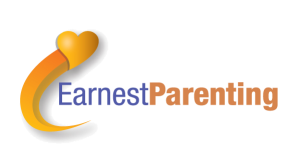If you’re a parent, your child having a medical emergency is probably one of your worst fears. You hope that no permanent damage will be done, but if you are a parent, you need to expect emergencies. Even if your kids aren’t adventurous daredevils, accidents happen and there is bound to be blood, choking, or broken bones at some point during their childhood. This doesn’t mean you are a bad parent—it is just part of life. To make sure you can help in case of an emergency, you should make sure that you know how to do a few essential things that will be necessary to properly handle the situation.
CPR
Short for cardiopulmonary resuscitation, CPR is something that all parents should learn. It’s a procedure that should be given to anyone who is going through cardiac arrest. If your child’s heart stops beating, you should use CPR until he or she starts breathing again or emergency personnel arrive on the scene. The standard way to do CPR is to perform 30 chest compressions followed by two breaths into the airway, but small children and infants need less chest compressions between breaths. Your local Red Cross usually offers training; this is a procedure that can be dangerous if you haven’t been trained. Please, take a class. They’re inexpensive and most definitely a great thing to do.
Treat Shock
In the case of shock, you normally lay your child down on his or her back, but if he or she is bleeding from the mouth or vomiting, lay your child on his or her side. Raise your child’s feet to increase the brain’s blood supply. Don’t give your child anything to eat or drink if you think they are in shock. Wait for professionals to get there for further treatments, but raising their feet and laying them on their back or side will help the situation until more help can get there. Keep your child calm, and cover with a blanket so the body temperature doesn’t drop too far.
Heimlich Maneuver
If your child starts choking on a piece of food or a small toy, you should use the Heimlich maneuver, but only use it if your child isn’t breathing. If he or she is gasping and coughing, your child should be able to dislodge the obstruction without help. It’s really hard to stand there and wait, but this is the safest plan. If they aren’t gasping or coughing, and their face is starting to flush or go purple, this means they aren’t breathing. According to medical professionals who specialize in physician house calls in Los Angeles, to perform the Heimlich maneuver, make a fist with one hand and place it above the child’s naval but below the breastbone. Grab your fist with your other hand and thrust upwards until the object is dislodged.
First Aid for Blood Loss
If your child is bleeding profusely, put a cloth on the cut and apply direct pressure. Don’t replace soaked bandages, and don’t try to clean anything. If needed, add dry cloths. If the bleeding is severe, you may need to make a tourniquet. If you know how to properly apply pressure to the cut, you can help slow the bleeding until help can get there.
Calling for Help
Most people think that if they know 911, they will be protected in any emergency. The truth is that different situations call for different specialists, so it is more beneficial to call the right professionals first. Having a list of emergency numbers will allow you to quickly call for help when the time arises. As the adult, you will need to be the one to call for help while others are frantic and frightened. This is the easiest thing to learn, and it’s one of the most important. Here are some numbers you should have on an easily-accessed list:
general emergency services (911)
poison control (1-800-222-1222)
police
fire department
doctor
dentist
With today’s technologies, it is easy to look up a number at a moment’s notice. One great way to save time is to keep all the emergency numbers in one place so you don’t have to look for them in the heat of an emergency. Or, if you have a smartphone, you can download an app that gives you instant access to any emergency numbers in your area at the drop of a hat. There are several of these apps to choose from, so you can choose one that fits your specific needs.
By learning these skills, you’ll be prepared and will be able to help your child or anyone else in emergency situations. The worst feeling is to be unprepared for an emergency and not knowing how to help those in danger. As the adult, you shouldn’t feel helpless—you should spring into action. If you’re a parent, you should just anticipate that emergencies will come up every so often. If you prepare for the worst, the outcomes will be the best.
Earnest Parenting: help for parents who want to know basic safety and first aid.


